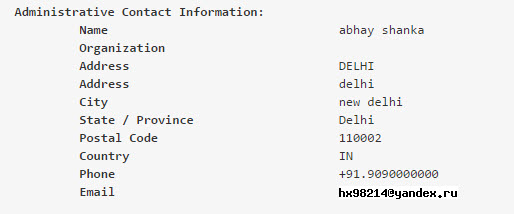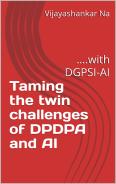Bitcoin supporters are now in a PR thrust mode trying to lobby with the Media and bring influence on the Modi Government for a favourable dispensation including some kind of recognition for Bitcoin.
According to this story “India is preparing Bitcoin Regulations and a Ban is unlikely”
The report makes a categorical statement that “..It is also becoming increasingly likely that authorities will not ban digital currencies in India.”…”..It continues to state “…A televised CNBC report in mid-April revealed that Indian authorities were leaning toward acknowledging bitcoin, granting it a legal status in the country with regulatory oversight by the government.”
However, one of the visitors to the site made the following comment which is revealing.
” Well, That is unlikely but rumors have come that RBI has stated all India banks to close down all accounts dealing with bitcoins. But have avoided giving reasons to the consumers. Axis Bank has started giving notice to the customers who are dealing in Bitcoins to close bank accounts within 30 days. with a reason that “your transactions are to be on serious concerns.” when asked for the reason, they have not replied it yet. One of the Yes Bank Manager had a chit chat with me in this regards (Denied to disclose name) but have stated that they indeed received notification from RBI to close such activities and Axis Bank letter was issued, right after 2 days of that, coincidentally.
I don’t think India is getting towards it, and even if they will, I have strong feelings (Bad Feelings) that they will apply apply such rules which will not be beneficiary for normal consumers to do so. This is my personal opinion and feeling. and I am against that, but truth can not be denied that Indian Government seems to be nervous approving it or rather to say “suffering from fear of adopting new Technology” Since they can not and they will not be able to completely control over it.”
I have earlier made extensive comment on my view that Bitcoin is an “Electronic Commodity” and not a “Currency” in the way people perceive currency such as Rupee or Dollar.
I have also stated a number of times that a majority of stock of Bitcoins in the world have passed through the hands of criminals and are therefore tainted. Acquiring,holding or transacting with these Bitcoins is therefore not supported by law and can be punishable.
Much to the discomfort of many of my friends in the technical circles, I have recently been stating that there is a case for a “Global ban” on Bitcoins because it has become the “Currency that is aiding and abetting Financial Terrorism” through ransomware.
However, enthused by the recent news report that Japan is legalizing the currency the exchange rates of BTC has surged to around $2000. Taking a cue from the news that even Russia may legalize the currency, Bitcoin industry is now going behind the Indian Government and planting stories in media that India also may legalize Bitcoins.
It may be true that the Government might have formed a committee to go into the issue which may work on a regulation for “Crypto Currency” in general. It is a pure speculation that this committee will legalize the “Bitcoins”.
In fact, there is no legal base in India by which “Bitcoin” can be recognized as a “Currency” even if another country like Japan or Russia accords recognition. If the committee suggests such a provision it will be ultravires the law.
Bitcoin community is also trying to confuse the issue with Indian Bankers by riding on the “Block Chain” as a technology and “Crypto Currency” as a concept to strengthen their claim for recognition of Bitcoin.
My opinion is that
a) Bitcoin as an Electronic Document is today considered as some thing similar to a club chip bought for cash. (I am ignoring that the holder can be a miner in which case it could be considered as legal)
It does not come under the Payment and Settlement Act, which recognizes three types of “Prepaid Instruments” (Refer RBI circular here) namely “Closed” system or “Semi Closed” system” or “Open” system.
b) Bitcoin is not a currency since it does not carry the backing of RBI as a legal tender.
c) Crypto Currency as a concept is fine and RBI can consider adopting it as part of its future strategy to issue currency.
d) Block Chain Technology is also fine though I doubt very much that the way it is being implemented as we understand in the Banking circles is ultra vires the Banking laws.
e) Any acquisition of Bitcoin from a foreign holder needs to be in accordance with the Import regulations under FEMA. Any acquisition in India even against payment of white money is only legal if the entire chain of custody of the unit of Bitcoin from its first generation to today has gone through identifiable individuals for legal exchanges only. Only “Mining” is legal but I doubt there is any single person in India who has himself mined a Bitcoin in India.
In the light of the above, it is not possible for the Committee of executives to recommend any form of legalization of Bitcoin. If they do, they are open to legal challenge.
It is possible that some politicians may be in favour of Bitcoins as it is a better form of storing black money particularly in the light of the demonetization of Indian high value currency. I am reasonably certain that many politicians and businessmen are already in possession of their black money holdings converted from their Swiss Bank accounts to Bitcoins.
It is necessary for the Modi Government therefore to ensure that they donot create an alternative mode of holding black money.
Additionally, in view of the entire “Ransomware Industry” being dependent on Bitcoin as a currency , one effective way for the world community to check the spread of Ransomware is by outlawing the Bitcoins on a global scale.
I would like India under Mr Modi to take the global leadership to outlaw Bitcoin even in countries where recognition has already been accorded and get it recognized as the “Currency of the Terrorists”.
Simultaneously, RBI should not allow vested interests to get some form of Block Chain technology to get into the Banking system without being vetted for compliance of Indian laws.
In my understanding,
Block Chain technology works where there is a “Public Ledger” to be kept of transactions which may be authenticated by any member of the public.
Every body tries to solve a puzzle while being witness to the transaction and one of them succeeds. He will be rewarded and recognized as the “Authenticator”.
This system cannot work in the Banking system where authentication is given of a transaction by a Bank with whom the client has a banker customer relationship.
The transaction cannot be tossed around to public and a public ledger of transactions published to a number of people who are not “Power of Attorney Holders of the Bank”.
Also if the number of such participating persons is not large, the system will fail statistically and fake authentications get created. Bitcoin survives because any attempt of creation of a fake authentication is defeated by the very large number of persons who will not authenitcate.
This formula cannot work in the Bank which wants to use a “Block Chain” technology for authentication of any bank transaction.
I request representatives of Banks who are experimenting with Block Chain technology to convince me that I am wrong.
I consider that the Banks are being influenced to endorse the Block Chain technology because it legitimizes the Bitcoin and hence this experiment is being supported by the global bitcoin commodity.
I want NDA Government to recognize that there is no legality in the claim made by Bitcoin that it should be considered as a “Recognized Currency in India”.
Instead I request the NDA Government to take up with the other countries in the UN to establish that there is a global welfare thought in demonetizing Bitcoins and it should be treated as a “Counter Cyber Financial Terrorism Strategy”.
The total Bitcoin wealth around the world is estimated to be valued at US$ 33 billion (Over Rs 2 lakh crores in INR) and all of this is financing Ransomware, Drugs industry, Illegal Arms industry and Black money with politicians etc. If all this wealth is de-anonymized, all countries will benefit from the flow of this wealth into the regular economy.
I hope the members of the “Committee To Advise Government on Bitcoins” are listening.
Naavi
Also Read:
Here’s why Bitcoin prices rose by 60% over a month
Bitcoin is a Speculative Asset, Not a Currency, Says Economics Professor
Despite RBI caution, Bitcoin exchange Zebpay adds 2.5k users a day in India
At Naavi.org..in ransomware context
- One more reason why there should be global ban on Bitcoins
- It is time for a world wide ban on Bitcoins









